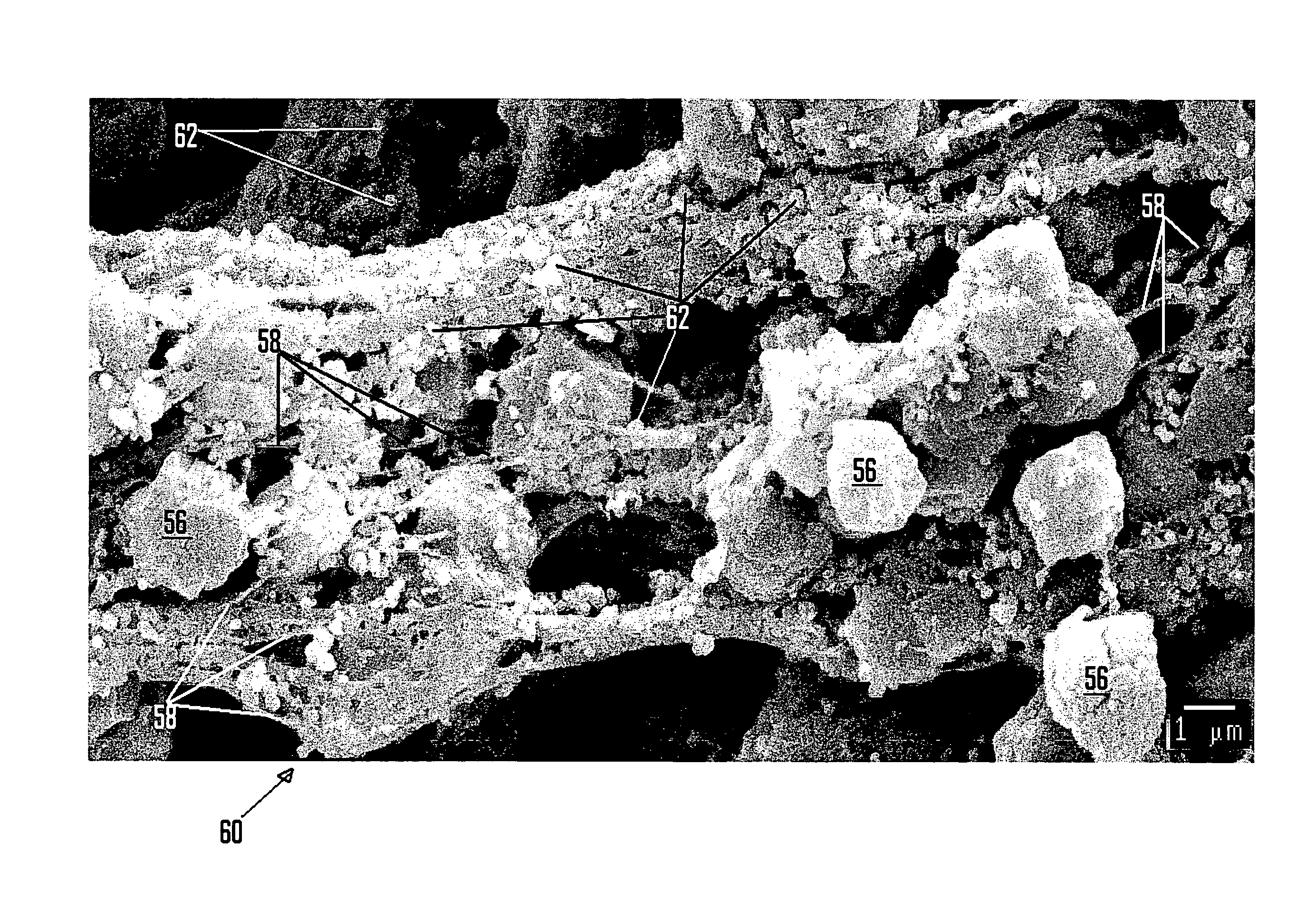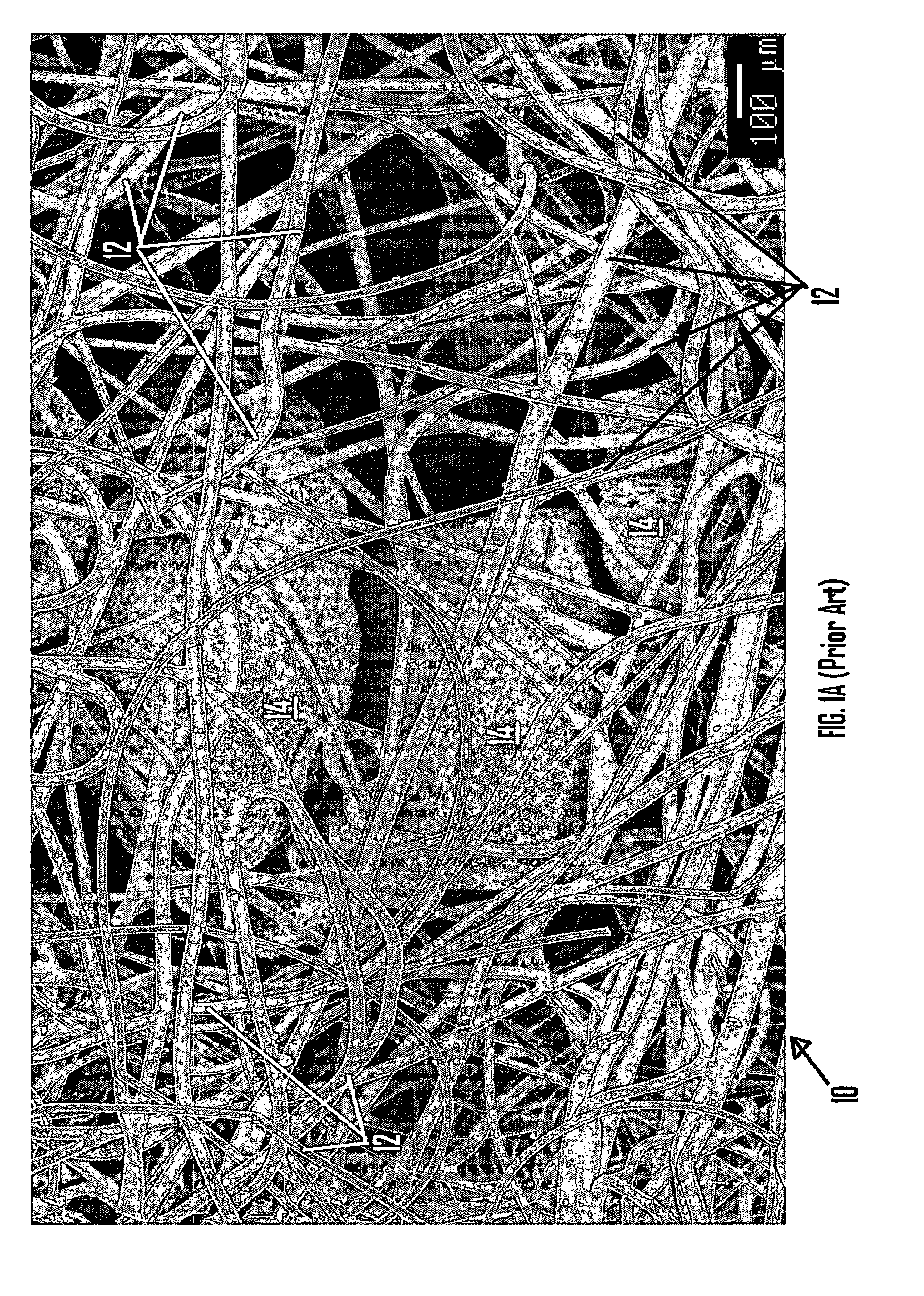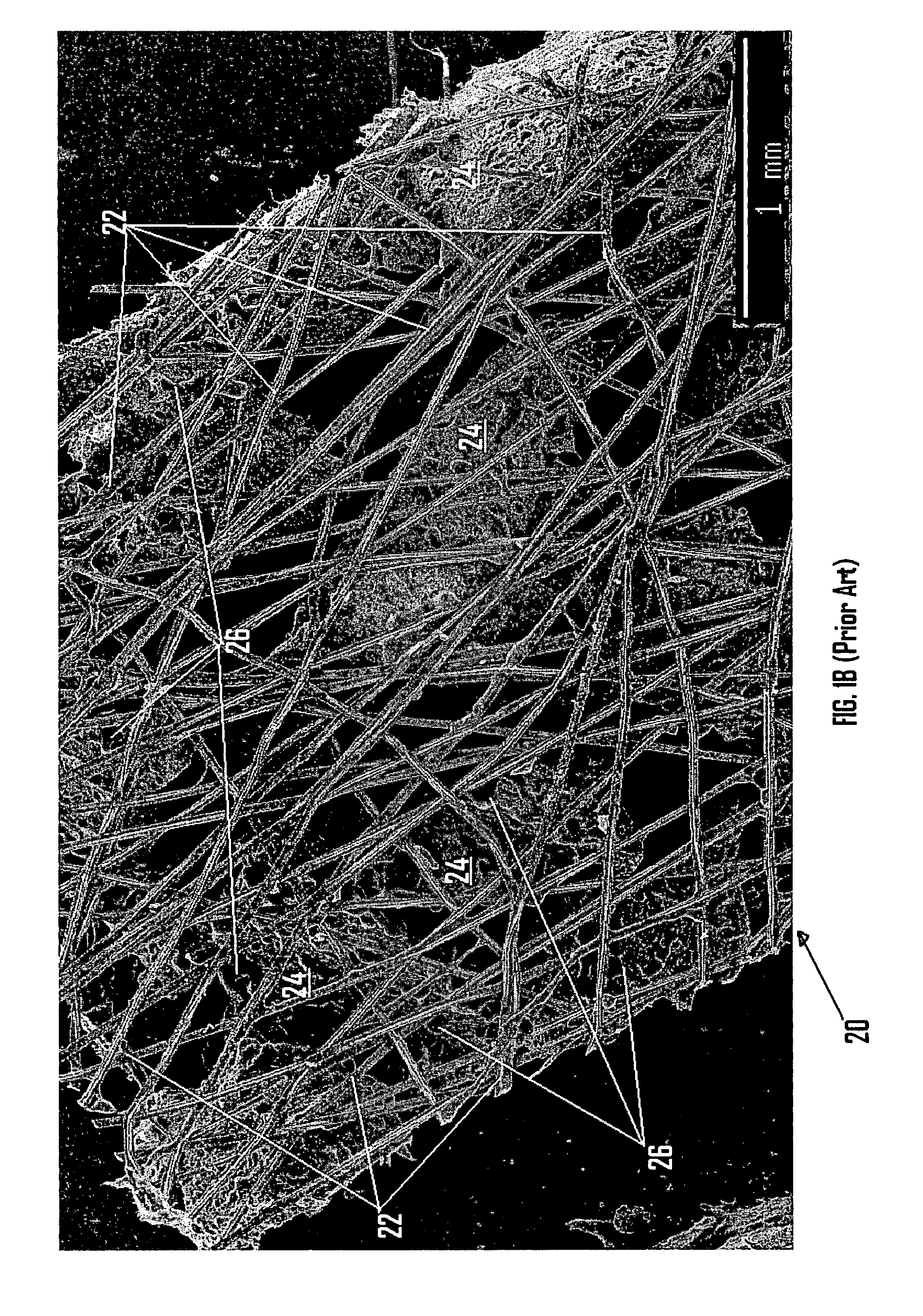Conformable structured therapeutic dressing
a structured, therapeutic dressing technology, applied in the direction of drug compositions, biocide, extracellular fluid disorder, etc., can solve the problem of not teaching synergy, achieve the effect of stimulating the therapeutic response in wounded tissue, preventing life-threatening blood loss, and arresting bleeding as quickly
- Summary
- Abstract
- Description
- Claims
- Application Information
AI Technical Summary
Benefits of technology
Problems solved by technology
Method used
Image
Examples
example 1
[0057]In this example, a mixture was made containing 92% by weight powdered chitosan and 8% by weight ultrahigh molecular weight polyethylene (UHMWPE, Ticona 4120). About 33% by weight SOY CLEAR™ processing oil was added to the mixture. The mixture was fed to a feed port of a 27 mm co-rotating twin screw extruder. SOY CLEAR™ processing oil was also fed into the feed port in an amount that raised the total process oil content to about 80% by weight of the mixture. The mixture was heated to about 180° C. in the extruder. The resulting gel extrudate was fed through a melt blown die, and the melt blown strands were collected upon a moving porous collector belt to form a continuous nonwoven web. Sheet samples were cut from the nonwoven configuration of macrofibers, and the processing oil was extracted with HFE-7200 solvent supplied by 3M under the trade name Novec™. The sheets can be used as a bandage for covering a bleeding wound.
example 2
[0058]In this example, a modified Activated Prothrombin Time (aPTT) spectrophotometric assay was performed on a sample of fibrous article type A to determine the in vitro clot initiation properties of this material. The sample was cut into a 1 cm×1 cm square and placed at the bottom of 1 ml disposable spectrophotometer cuvette. The cuvette containing the sample was placed in a temperature-controlled spectrophotometer (Beckman Instruments, Fullerton, Calif.). Then, 1.5 ml of standardized FACT human plasma (George King Biomedical, Overland Park, Kans.) was introduced into the cuvette. After the spectrophotometer was blanked at 405 nm, 136.4 μl of 0.2 M calcium chloride solution was added to the cuvette and the absorbance was measured at 405 nm. FIG. 11 shows the change in absorbance with time. The rise in absorbance indicates fibrin formation, suggesting that the material would initiate a blood clot in vivo.
example 3
[0059]In this example, a 10 cm×10 cm×0.3 cm sample of fibrous article type A was saturated with blood by placing the sample in the cavity of a coagulopathic domestic swine. A portion of this sample was prepared for SEM analysis and is shown at 2000× magnification in FIG. 12. An unexposed sample is shown in FIG. 13. Each of FIGS. 12 and 13 shows multiple macrofibers 140, similar to those shown in FIG. 5. Comparison of these two images reveals that fibrin 142 (a spider web-like structure containing red blood cells 144 and platelets 146 on the surface of the fibrous article) is evident in the exposed sample of FIG. 12, indicating the formation of a blood clot.
[0060]Examples 4 and 5 presented below entailed the use of Yorkshire swine, a type of domestic swine, because domestic swine are well established as a standard model for the study of hemorrhage in human beings. These two examples verify, therefore, the efficacy of the articles of filled polymeric macrofibers in reducing blood flow...
PUM
| Property | Measurement | Unit |
|---|---|---|
| diameters | aaaaa | aaaaa |
| diameters | aaaaa | aaaaa |
| diameter | aaaaa | aaaaa |
Abstract
Description
Claims
Application Information
 Login to View More
Login to View More - R&D
- Intellectual Property
- Life Sciences
- Materials
- Tech Scout
- Unparalleled Data Quality
- Higher Quality Content
- 60% Fewer Hallucinations
Browse by: Latest US Patents, China's latest patents, Technical Efficacy Thesaurus, Application Domain, Technology Topic, Popular Technical Reports.
© 2025 PatSnap. All rights reserved.Legal|Privacy policy|Modern Slavery Act Transparency Statement|Sitemap|About US| Contact US: help@patsnap.com



